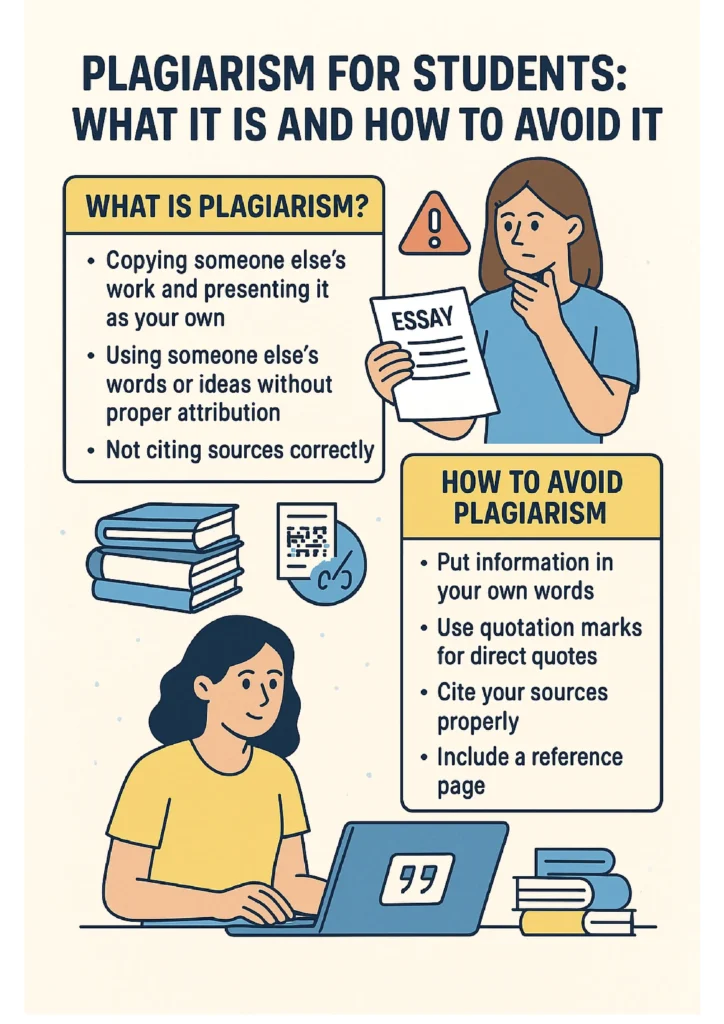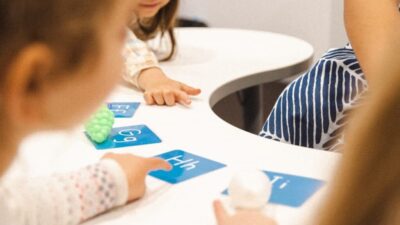
In the age of the internet, it has never been easier to copy and paste information. At the same time, it has never been more important to understand plagiarism. Schools, colleges, and even online platforms take plagiarism very seriously. Students can lose points, fail assignments, or face disciplinary actions if they present someone else’s work as their own. This guide explains what plagiarism is, why it matters, common mistakes students make, and how to avoid it in a practical way. Many learners keep plagiarism-check tips, citation charts, and writing checklists in digital form and organize these PDFs using PDFmigo.com.
What Is Plagiarism?
Plagiarism happens when you use someone else’s words, ideas, or creative work and present them as if they belong to you. It does not matter if the source is a book, website, video, AI tool, or a friend’s essay—if you do not give proper credit, it can be considered plagiarism.
Plagiarism includes:
- Copying whole sentences or paragraphs from a source without quotation marks and citation
- Paraphrasing (rewriting) someone else’s ideas without giving credit
- Using images, charts, or graphs without acknowledging where they came from
- Submitting someone else’s work (or an assignment you bought) as your own
- Reusing your own previous assignment in a new class without permission (self-plagiarism)
Why Is Plagiarism a Big Deal?
Plagiarism is not just a “school rule”—it is a question of honesty and academic integrity. When you plagiarize, you:
- Take credit for work you didn’t actually do
- Prevent teachers from seeing your real abilities
- Miss the chance to practice writing and thinking skills
- Risk serious consequences, such as failing grades or disciplinary records
Learning to avoid plagiarism helps you become a more honest and confident writer.
Common Types of Plagiarism
1. Copy-and-Paste Plagiarism
This occurs when students copy text from a website, PDF, or book and paste it directly into their assignment without quotation marks or a citation.
2. “Patchwork” Plagiarism
Here, students mix pieces of text from different sources, changing a few words but keeping most of the original structure. Even if the wording is slightly changed, this is still plagiarism if there is no proper credit.
3. Paraphrasing Without Citation
Many students believe that if they “put it in their own words,” they no longer need to cite the source. This is incorrect. If the idea came from another author, you still must acknowledge them.
4. Self-Plagiarism
Reusing your own previous essay or lab report for a new assignment without asking your teacher can also be considered plagiarism, because you are submitting old work as if it were new.
How to Avoid Plagiarism
1. Take Good Notes While Researching
When you read sources, clearly separate:
- Your own ideas
- Direct quotes (exact wording from the source)
- Paraphrased ideas (your rewording of the source’s idea)
Write down the author’s name, title, page number, and website link right away. Later, you can use this information to create a proper citation. Some students save PDFs of articles and merge them into a single research folder with tools such as Merge PDF.
2. Learn the Basics of Citation Styles
Different classes use different citation styles (APA, MLA, Chicago, etc.), but they all serve the same purpose: to show where your information came from. In general, you must:
- Include in-text citations after quotes or paraphrases
- Add a reference list, works cited page, or bibliography at the end
- Follow the format requested by your teacher
3. Use Quotation Marks for Exact Words
Whenever you use the exact wording from a source, put it in quotation marks and follow it with a citation. For example:
“Plagiarism is using someone else’s words or ideas as if they were your own” (Smith 24).
4. Paraphrase Correctly
Paraphrasing is not just changing a few words. A correct paraphrase:
- Uses your own sentence structure
- Expresses the idea in a new way
- Still gives credit to the original source
Example: Original: “Plagiarism undermines trust in academic communities.” Paraphrase: “When students copy work, it damages the trust that schools depend on.” (citation required)
5. Keep Track of All Your Sources
As you research, collect all articles, books, and websites in a single place. You might:
- Save PDFs in one folder
- Use a digital note-taking app
- Maintain a running list of sources in a document
Staying organized makes it much easier to build your reference page correctly.
6. Use Plagiarism Checkers Wisely
Many schools provide access to plagiarism-checking tools. These tools compare your writing to existing sources and highlight potential matches. They are helpful for catching accidental plagiarism, but they do not replace good note-taking and citation practices.
Tips for Teachers’ “Write in Your Own Words” Requirements
Teachers often emphasize writing in your own words. To do this effectively:
- Read a paragraph from the source, then close the book or minimize the screen
- Explain the idea out loud as if you were telling a friend
- Write down your explanation without looking at the original
- Afterward, compare your version to the source to ensure you did not copy the structure or wording too closely
Organizing Your Work to Stay Plagiarism-Free
One of the easiest ways to avoid plagiarism is to stay organized. Keep drafts, notes, outlines, and final versions clearly labeled. Many students export drafts to PDF and keep everything together—research articles, outlines, final essays—using tools provided at PDFmigo.com. When you know exactly where your information came from, it becomes much easier to credit it correctly.
Final Thoughts
Plagiarism can feel confusing at first, but the core idea is simple: always give credit when you use someone else’s work. By taking careful notes, citing your sources, paraphrasing correctly, and staying organized, you can avoid plagiarism and build a reputation as an honest, skilled student. Learning these habits now will help you succeed not only in school but also in future academic and professional writing.











Comments